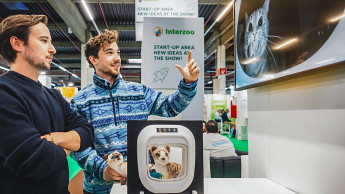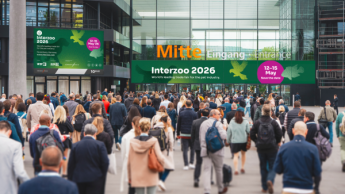All’s well that ends well – that sums up the outcome of the world’s leading trade fair Interzoo in Nuremberg. All targets were reached: The number of exhibitors rose by ten per cent and the number of visitors grew by two per cent and the internationality of the trade fair improved again compared to 2012. Interzoo was therefore able to impressively enhance its position as the number one trade fair in the pet industry. As most of the exhibitors and visitors were once again very satisfied with the trade fair this year, it goes without saying that Interzoo 2016 is destined to be another success.
However, the success of this year’s Interzoo did not come without a battle. Some of the industry’s big players like Mars Petcare, Nestlé Purina, Hill’s und Spectrum Brands (“Tetra“) made it known from the outset that they would either not exhibit at Interzoo or, as in the case of Royal Canin, only on a small scale. Few of the companies would admit that the costs for the accustomed pompous appearance at the trade fair, were just too high. It remains to be seen if their absence from Interzoo will have a negative effect on one or the other supplier.
Boost for start-ups at Interzoo 2026
Interzoo 2026 supports start-ups and innovators from the pet supplies industry with special stand areas and formats such as the Fresh Ideas …
There will, most likely, be some kind of damage to the image of the leading industry players due to their absence from the world’s leading specialist trade fair. Some managers from the ranks of the companies concerned, sidled contritely through the trade halls and gave the impression as if they were not too happy with their companies’ management decision. Apparently some multinational enterprises have problems to adequately represent themselves at leading world trade fairs. Their businesses run mostly on a national level, so that there are often considerable differences in the range of products and strategy between the national organisations. This makes a unified appearance at an international trade fair all the more difficult. Within multinational enterprises there are also varied opinions about, for example, who should pay for the representation at a leading world trade fair: the German partner company or the parent company in France, America or wherever?
Surely it’s possible to sit down, in one of the many meetings that take place in companies these days, and try and find a viable solution for this…

 Menü
Menü








 4/2014
4/2014













 Newsletter
Newsletter